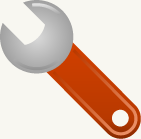Translator Group Buying TGB is a tool offered to give an opportunity for translators buying CAT tools and other software together to get a lower price and realize significant savings through group buying. How does it work?TGB campaigns have a target number, which is the number of people that need to sign up for the discount to be made available to everyone on the list of buyers. If you see an offer you are interested in, you can sign up for it by clicking on the button that says "Join the group of buyers" at the end of the campaign. You can also tell your friends about it to make sure that the target is reached before the deadline. Once you've signed up, you should receive a notification from [email protected] and further communications before the deadline is reached. If you haven't heard from the TGB team and the deadline is approaching, feel free to reach out. You will receive instructions for payment and all communications via email. If you have any questions or suggestions, please reach out to [email protected]  What is a CAT Tool?CAT stands for "Computer Aided Translation Tool". The terms "Translation Memory" and "TM" are sometimes used to refer to the same type of tool. A CAT tool is a computer program that helps a translator to work efficiently.This is achieved through three main functions:
Besides these main functions many other functions may be included in CAT tools, to make translating easier and increase productivity. Introduction provided by Hermann Bruns. | Translator Group Buying Translation software reviewsRead reviews of software tools by other translators, pricing information, system requirements, and more at the ProZ.com Software Comparison Tool. |